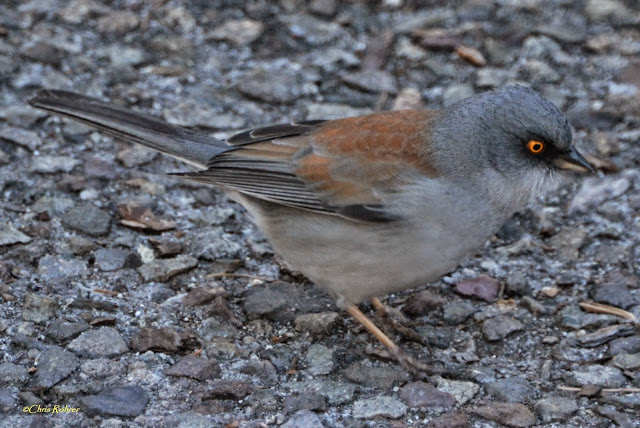 |
| Sweetwater at sunset |
 |
| Regal Horned Lizard |
 |
| As the snow melts from Mt. Lemmon, mountain streams form and run through Catalina State Park |
 |
| Rufous-backed Robin |
"Sir, I'm sorry to inform you, but Dr. Elizabeth Willott passed away last year." WHAT??!!! I have been so involved with birds, I forgot to stop and remember where it all began. How can a year fly by? And how did I not hear about this?!!!
As many of you know, I began this blog about gardening 6 years ago today. I would work with Elizabeth often at her newly created Butterfly Magic display. She had a messy office which is where I believed she slept at night:) I enjoyed working with her and we had a lot of fun inside the greenhouse, the office or the chrysalis chamber. Today her legacy continues at the Botanical Gardens. Elizabeth, you will be missed. Thank you for teaching me the ways of tropical butterflies and about the plants they require to survive. I'd also like to dedicate this post to Tina Forrester(aka East EG Gwillimbury Camera Girl), who along with her husband, were tragically killed in a car accident this last week. She was both artist and birder. My heart goes out to their family and friends. Lately, I have been overwhelmed with good-byes.
 |
| On Mt. Lemmon switching from stressed out teacher to stressed out birder:) |
 |
| Look carefully. She's nesting in a dangerous location. |
 |
| The secretive Sinaloa Wren |
 |
| Sinaloa Wren-the money shot. I will no longer need any photos of this bird:) |
 |
| Our wonderful crew, Gordon, Peggy and Jennifer |
 |
| A rare Baltimore Oriole swings in for a visit |
I have been exhausted. I DID become sick thanks to a disease spread by the Snowbird people. And I DID discover that I am mortal. One night I wasted away in my bed wanting nothing more than to sleep. This constant "GO" mode is draining. And it is very exciting. I continue to do fieldwork with Audubon and several other organizations while still helping out visiting birders. I don't know when this transition happened, but it just did. The camera has taken a back seat for the most part as I have seen most of these birds many times. And the lifers that I do see now are some of the trickiest to capture on camera!
 |
| Marsh Wren hopping around |
I clean my garden and fill my feeders. Lesser Goldfinches, House Finches and Sparrows visit, reminding me of the simpler times before it all became so much more. While this "hobby" is demanding, I am so fascinated by discovery and exploration that it's hard to stop and waste a moment watching TV or just doing "nothing". Courses are always being plotted. Travel is always in the works. And birding has become a way of life.
 |
| Mediterranean Gecko-I have many living under the rocks in my garden! |
While much of my work these past two months has been about helping others, it's time to work a little harder on that life list. During the month of March, I hope to present several new birds from our treks. Until our next encounter.....
In the video, you can hear the human f(W)REN-zy happening in the background.















































